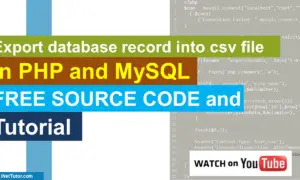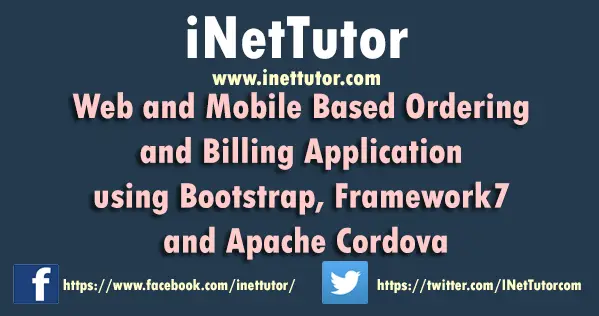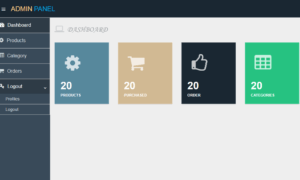Review on the Basics of PHP
Introduction
Table of Contents
PHP (Hypertext Preprocessor) is a popular open-source programming language that is particularly well-suited for web development. It can be embedded directly into HTML, making it a popular choice for building dynamic, database-driven websites. PHP is often used in conjunction with a web server such as Apache or Nginx and a database management system such as MySQL. Some popular Content Management Systems (CMS) such as WordPress, Drupal, and Joomla are also written in PHP. It is also can be run on almost all operating systems, including Windows, MacOS, and Linux, and can be used with many different web servers.
Objectives
By the end of this lesson, students should be able to:
- Explain how PHP works
- Enumerate the features of PHP
- Enumerate the uses of PHP
Lesson Proper
The objectives of this lesson are for students to gain a comprehensive understanding of PHP. By the end of this lesson, students should be able to explain how PHP works, including its integration with web servers and databases, as well as its ability to be embedded into HTML. Additionally, students will become familiar with the key features of PHP, such as its open-source nature, its wide range of supported platforms, and its ease of use. Furthermore, students will learn about the various uses of PHP, including building dynamic websites, powering popular Content Management Systems, and creating server-side scripts. By the end of this lesson, students should be equipped with the knowledge needed to start using PHP in their own web development projects.
How PHP works
PHP works by being embedded into HTML code and executed on the server-side. When a user requests a PHP file from a web server, the server first runs the PHP code in the file, which can include instructions to access databases, perform calculations, and generate HTML code. The server then sends the resulting HTML code back to the user’s web browser to be displayed as a webpage.
The PHP interpreter reads the codes and performs the actions specified by the code, such as reading data from a database or performing mathematical calculations. It then generates the resulting HTML code, which is sent back to the client browser to be displayed as the final webpage.
PHP also can use a variety of built-in functions and libraries to perform common web development tasks, such as connecting to databases, handling form data, and working with cookies and sessions. Additionally, PHP also has its own memory management system and provide support for various programming paradigm such as object-oriented and functional programming.
Overall, PHP is a powerful and flexible programming language that is well-suited for web development, and its server-side processing allows for dynamic and interactive websites.

Features of PHP
PHP, or Hypertext Preprocessor, is a popular open-source programming language that is widely used for web development. The following are some of the key features of PHP:
- Server-side execution: PHP code is executed on the server-side, allowing for the dynamic generation of HTML code to be sent to the client’s web browser. This allows for the creation of interactive and dynamic websites.
- Embedding into HTML: PHP code can be embedded directly into HTML code, making it easy to integrate with existing web pages.
- Wide range of supported platforms: PHP can run on almost all operating systems, including Windows, MacOS, and Linux, and can be used with many different web servers.
- Large community and extensive library of functions: As an open-source language, PHP has a large community of developers who have created a wide range of libraries and functions for common web development tasks.
- Support for various databases: PHP can interface with a wide variety of databases, including MySQL, PostgreSQL, and SQLite, making it a powerful tool for creating database-driven websites.
- Support for multiple programming paradigm: PHP is a versatile language and can be used with different programming paradigms such as object-oriented, functional and procedural.
- Built-in support for common web development tasks: PHP has built-in support for working with cookies, sessions, and forms, which simplifies the development of web applications.
PHP is a powerful and flexible programming language that is widely used for web development due to its server-side execution, ability to be embedded into HTML, support for a wide range of platforms, large community and extensive library of functions, and support for various databases, memory management and multiple programming paradigm.
Uses of PHP
PHP is a popular open-source programming language that is widely used for web development. The following are some of the possible uses of PHP:
- Dynamic websites: PHP can be used to create dynamic and interactive websites by generating HTML code on the server-side. This allows for the creation of websites that can display different content based on user input or other conditions.
- Content management systems (CMS): Many popular CMSs, such as WordPress, Drupal, and Joomla, are written in PHP. These systems make it easy for non-technical users to manage and update the content of a website.
- E-commerce websites: PHP can be used to create e-commerce websites that allow users to purchase products and services online. PHP’s built-in support for working with forms and sessions, as well as its ability to interface with databases, make it a good choice for building e-commerce sites.
- Social media platforms: PHP is widely used in the development of social media platforms, such as Facebook, Twitter, and Instagram. It can be used to create the functionality required for creating and managing user profiles, sending and receiving messages, creating groups, posting photos and videos, and more.
- Server-side scripting: PHP can be used to create server-side scripts that perform tasks such as sending email, generating PDFs, and creating backups. These scripts can be triggered by events, such as the submission of a form, or can be scheduled to run at specific intervals.
- Data analysis and reporting: PHP can be used to extract data from databases and perform calculations; PHP also can be integrated with other languages such as R, Python.
- Web services: PHP can be used to create web services that can be consumed by other applications. This allows for the sharing of data and functionality between different systems.
- Create Web Applications: PHP is widely used to create different web applications like chat applications, forums, CRM, Project Management tools, and more.
In conclusion, PHP is a versatile programming language that can be used for a wide range of web development tasks, including creating dynamic websites, content management systems, e-commerce sites, social media platforms, server-side scripting, data analysis and reporting, web services, and web applications.
Things to Remember
- A PHP script starts with <?php and ends with ?>. A PHP script can be placed anywhere in the document.
- The default file extension for PHP files is “.php”.
- A PHP file normally contains HTML tags, and some PHP scripting code.
- PHP statements end with a semicolon (;).
- In PHP, keywords (e.g. if, else, while, echo, etc.), classes, functions, and user-defined functions are not case-sensitive.
- However; all variable names are case-sensitive!
Summary
This lesson was about PHP, which is a popular open-source programming language that is particularly well-suited for web development. The lesson covered the following points:
- How PHP works, including its integration with web servers and databases, as well as its ability to be embedded into HTML.
- The key features of PHP such as its open-source nature, wide range of supported platforms, ease of use, large community and extensive library of functions, support for various databases, memory management and multiple programming paradigm.
- The various uses of PHP, including building dynamic websites, powering popular Content Management Systems, creating server-side scripts, e-commerce websites, social media platforms, data analysis and reporting, web services and creating web applications.
Overall, this lesson provided an overview of PHP, its features, and its applications in web development. It discussed how it works, and how it’s used to build different types of websites, web applications, and web services. Furthermore, it also highlighted how this programming language is versatile and widely supported.
Readers are also interested in:
Best PHP PDF Tutorials for Beginners
PHP Course Outline for Beginners
You may visit our Facebook page for more information, inquiries, and comments. Please subscribe also to our YouTube Channel to receive free capstone projects resources and computer programming tutorials.
Hire our team to do the project.


